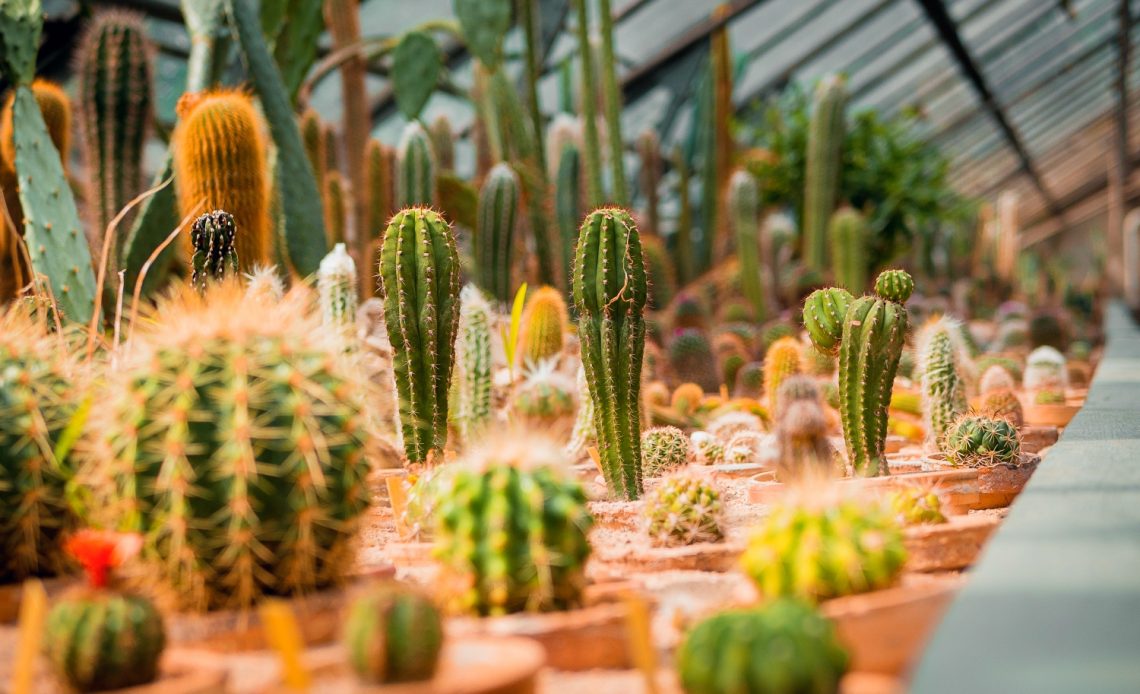

We’re here to help! Wild Yards is a completely free website that is 100% dedicated to helping you create a wildlife-friendly, sustainable yard. Read more
WildYards is reader-supported. When you buy a product through a link on our site, we may earn a comission. Every product is independently selected by our (obsessive) editors and our reviews are unbiased and objective. Read more about our mission or our privacy policy.
Cacti don’t require much work in terms of watering, pruning, and fertilizing. So these plants are an excellent choice for anyone who wants to grow something but doesn’t have much time to devote to gardening.
Of course, just because cacti are easy to grow, that doesn’t mean they will never run into any problems.
If your cactus plant isn’t looking so hot these days and is leaning to one side, you may be wondering why your cactus is falling over.
Underwatering, overwatering, insect infestations, improper planting, and lack of support are the most common reasons why cacti fall over.
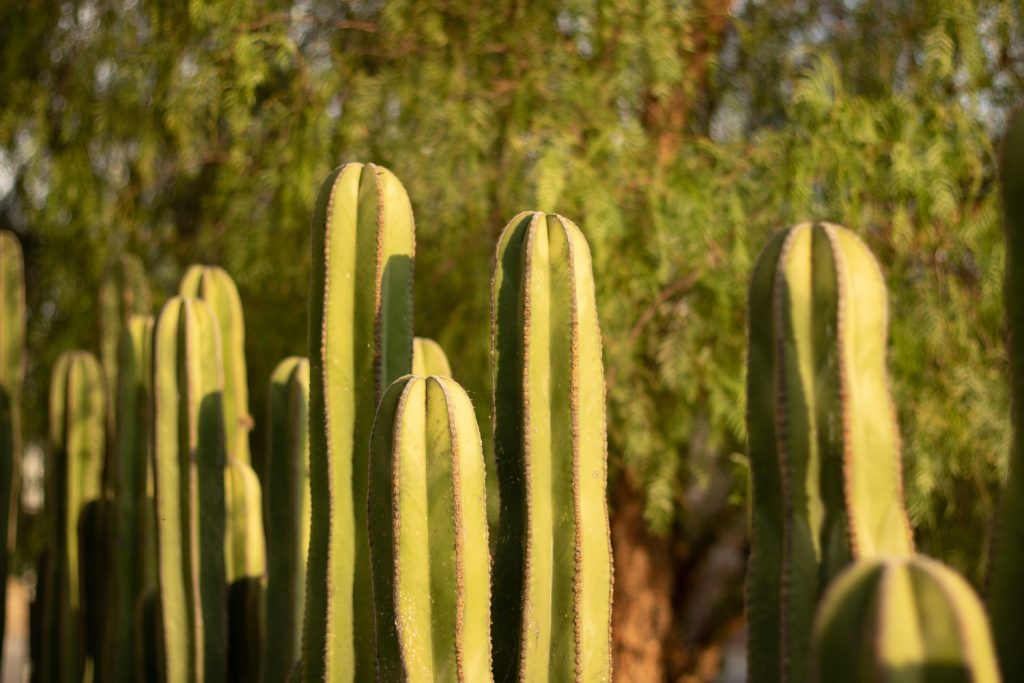
8 Reasons why your cactus might be falling over, plus solutions that work
Cacti are hardy plants and an absolute must for desert-inspired landscapes. They’re a low-maintenance option that can also help you save money in the long run since they don’t need to be fed much and have low water needs.
But, easy as these plants are to care for, they can still suffer from health issues that you’ll need to be on the lookout for.
If your cactus is wilting, turning white, and leaning to one side, it’s time to take a closer look.
Here are 8 reasons why your cactus is falling over, and what you can do to help the plant recover.
The problem: Underwatering
Cacti have low water needs, but if they don’t get enough water, they won’t be able to produce the healthy, strong roots they need to stay upright. The result? A cactus plant that looks like the Leaning Tower of Pisa.
If your cactus is wilting and tipping over, especially if its skin has a shriveled appearance, these are all indicators that the plant isn’t receiving enough water.
You may also notice that your cactus plant hasn’t grown much in a while.
Feel the soil around the cactus. Obviously, cacti prefer dry soil. But if the soil feels powdery 3 inches below the surface, then it is far too dry for the plant’s liking.
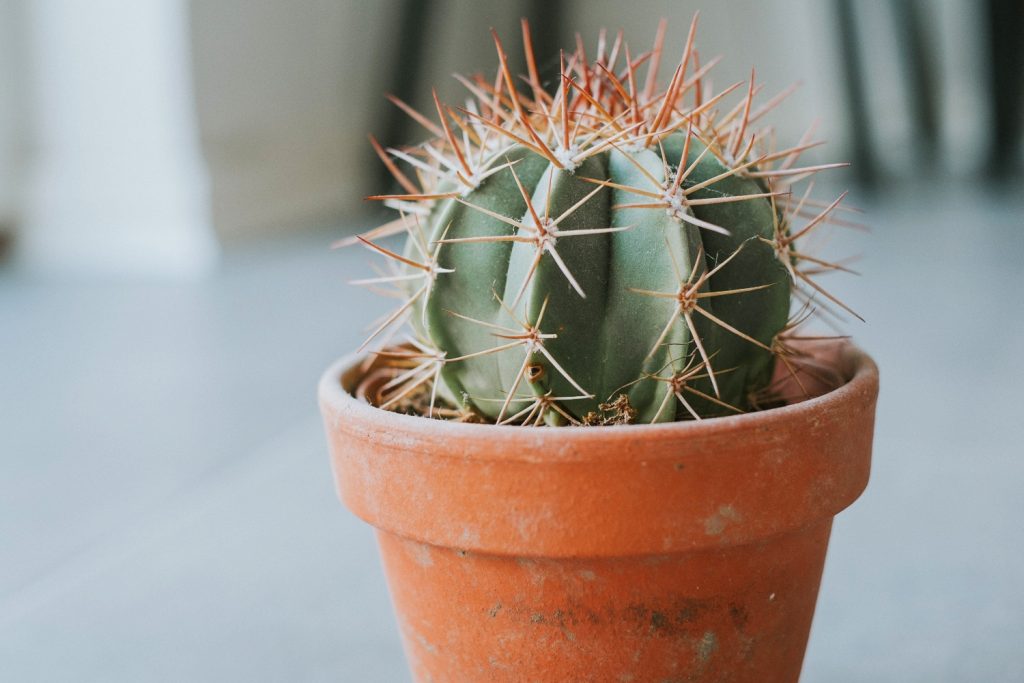
The solution: Water the plants
The answer to this issue is simple. Just water your cactus!
If your cactus is leaning because it’s not hydrated, give it a good long soak to reach the plant’s deepest roots.
For plants growing in your landscaping, that means turning an irrigation hose on at a slow, steady drip and leaving it around the plant for 2 to 6 hours.
And, for potted cactus plants, that means watering until water begins to drip from the drainage holes at the bottom of the pot. If your potted cactus has a saucer at the bottom, simply fill this with water instead, to mimic desert conditions.
Cactus should be watered at least once a week in the summertime. During especially hot, dry weather, water your cacti 2 to 4 times a week.
Note: Watering the cactus will help it right itself, but it will also loosen the soil, making the plant more likely to fall. Be sure to support the plant with stakes and string to help it get growing in the right direction.
The problem: Overwatering
If your cactus has been overwatered, either because your region has seen an increase in rainfall, or because you accidentally left the hose running for too long, that could explain why the plant is falling over.
Take a closer look at the soil. Do you see water standing? Wet soil is much looser than dry soil, and may result in a leaning cactus.
Too much water also makes your cactus prone to root rot.
The cactus plant’s roots don’t just help it absorb air, water, and nutrients from the soil. They also help keep the plant anchored.
If your cacti’s roots are rotting away, the plant can become “untethered”, so to speak, causing it to fall over.
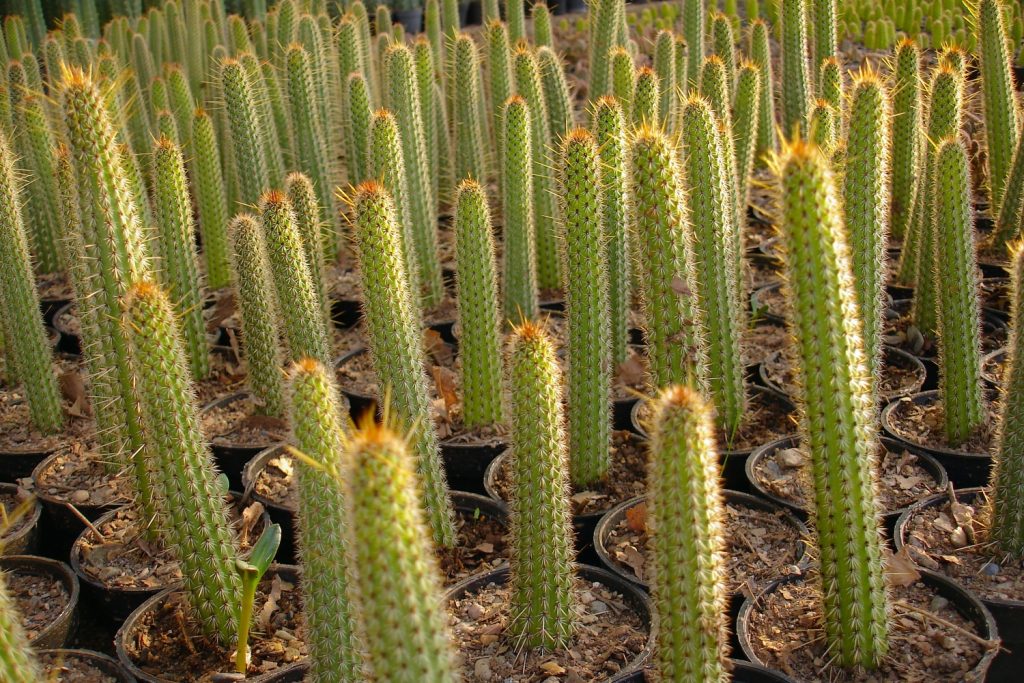
The solution: Improve drainage and let the soil dry out
Your cactus won’t grow well if it has been planted in compacted, poorly draining soil.
If your native soil holds onto moisture easily, that could be the source of your cacti’s health issues. Cacti also dislike soil that has been amended with coffee grounds, and other moisture-retaining materials.
Use sand, or potting soil specifically designed for cacti and succulents, to improve drainage for your plants.
For potted cacti, consider adding a layer of gravel or perlite to the bottom of the container. Be sure the container has plenty of drainage holes.
Allowing the soil to dry out thoroughly in between waterings will help your cactus grow healthy, strong roots. Keeping the soil dry will also help the plant anchor itself so it doesn’t tip over.
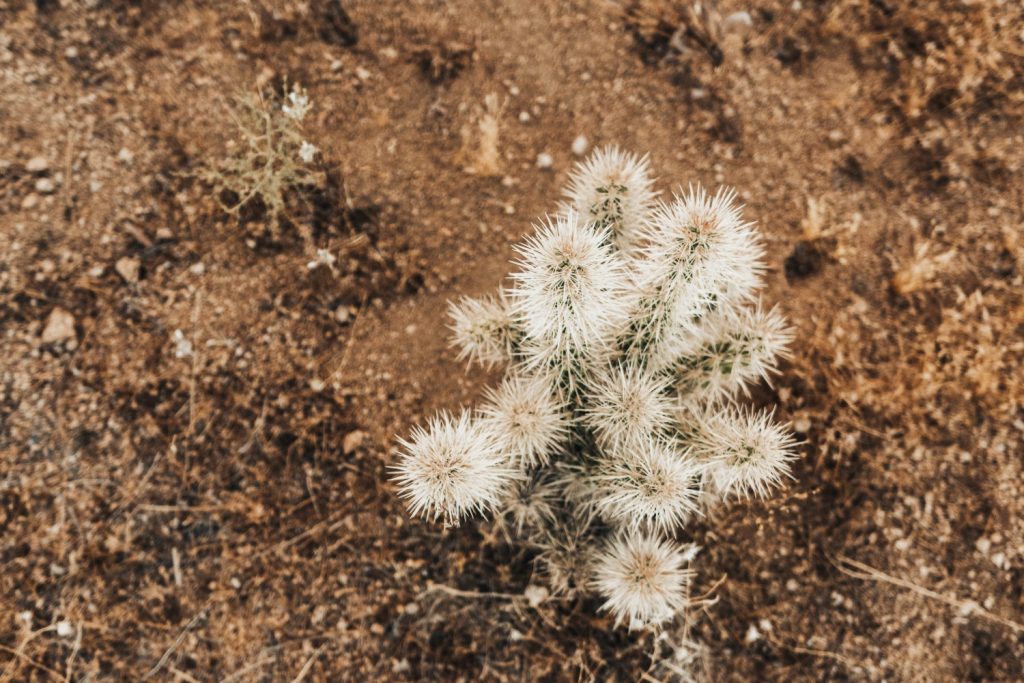
The problem: Insect infestations
Cacti are susceptible to a number of pests, including scale insects, mealybugs, spider mites, thrips, and sap-sucking insects.
All of these insects weaken the plant over time by depriving the plant of the food it makes for itself.
Inspect your cacti’s foliage for signs of insect damage. The plant may wrinkle and develop an anemic appearance. Other signs that your cactus is falling prey to insects include holes in the foliage, stunted growth, and poor bloom production.
If you look with a magnifying glass and flashlight, you may even be able to spot the insects themselves.
And be sure to check the soil around the plant. Some bugs prey on a plant’s root systems, which can cause them to lean.
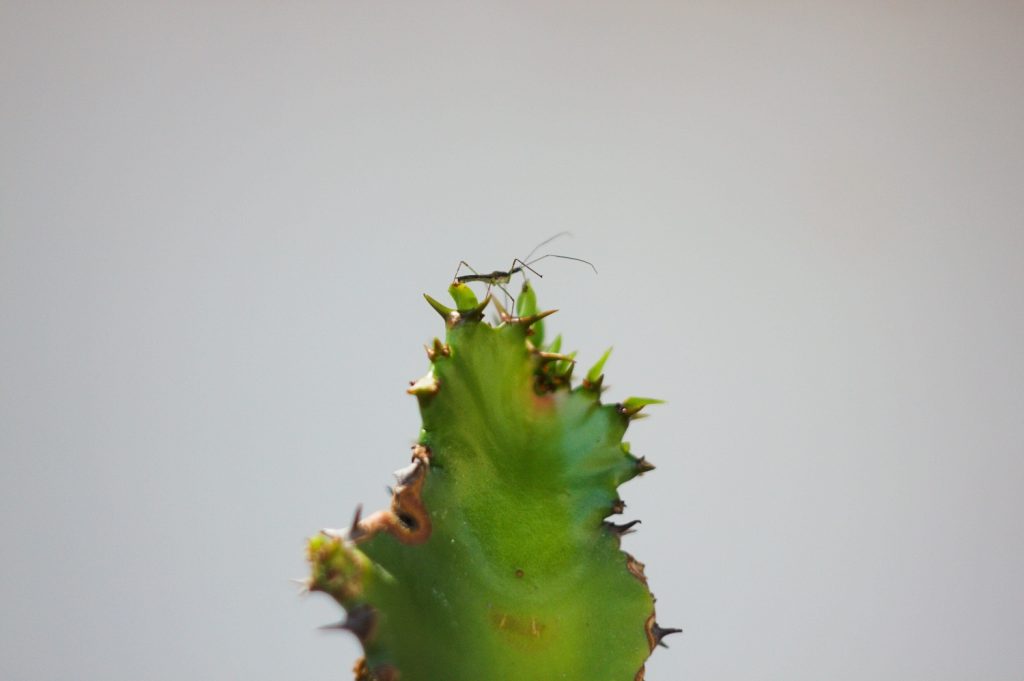
The solution: Use an insecticide
The good news is that most of the insects that prey on cacti are relatively easy to get rid of.
Use a homemade insecticide to kill and repel damaging insects. You can use a toothbrush to gently scrub eggs and larvae off the surface of the plants.
If you’d prefer to purchase a commercial insecticide, look for a product that contains neem oil. This ingredient has been found to be particularly effective at reducing pest populations without damaging the environment.
Remember that insecticides are a double-edged sword. They may kill the bad bugs, but they can kill good bugs, too, especially if you’re not careful.
If you see ladybugs or butterflies around your plant, there’s no need to use an insecticide. And if all you find in the soil are spiders, don’t panic — these insects can help you keep the pest problem under control!

The problem: Planted in an oversized pot
Your cactus may also fall over if it’s growing in a pot that’s too large for it.
Smaller cacti need smaller pots to keep the soil somewhat compacted as they develop their root systems.
When smaller cacti are planted in large pots, the soil is much looser, and the plants may tip over before they get a chance to secure themselves with their roots.
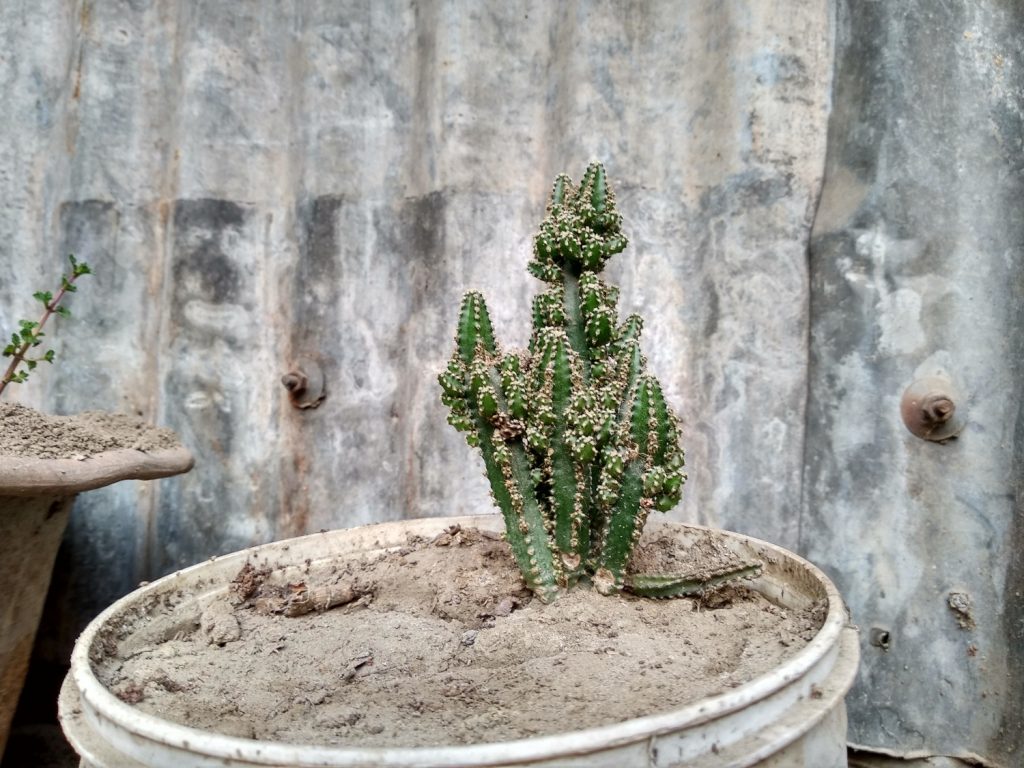
The solution: Repot the plant
Ideally, your cactus should be planted in a pot that has only 2 to 4 inches of extra space on all sides. The container should also only be a few inches deeper than the plant’s roots.
Cactus should be repotted regularly, at least once a year.
Rather than place your young cactus in a large planter to accommodate its mature size, it’s important to repot the plant throughout its growth stages, sizing up gradually to ensure the plant doesn’t fall over.
Be sure to use potting soil designed for cactus and succulent gardens. Avoid repotting a cactus plant while it is blooming, as this may stress the plant, and water the plant well after transplanting.
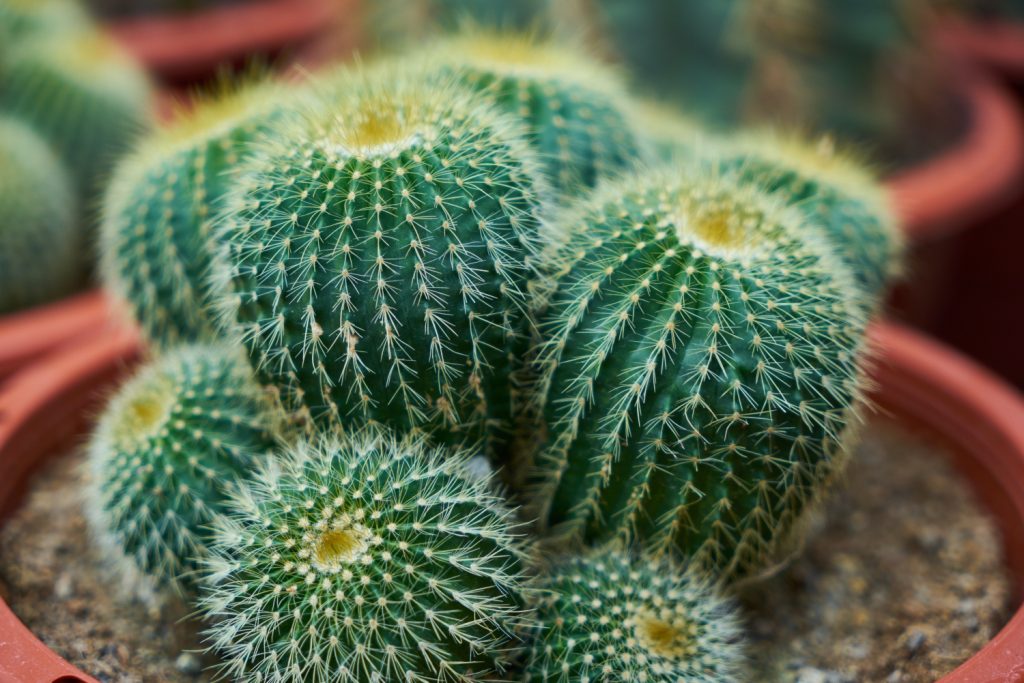
The problem: Improper planting
If you recently transplanted your cactus and now it’s falling over, then you may’ve done something wrong when you transplanted it.
Planting cactus in loose soil is critical because loose soil offers good drainage, and that keeps the plant happy.
But if you fail to tamp around the plant when you repot it, or as you transplant it into the beds in your landscaping, then the resulting air pockets will cave in, and the plant will fall over as they do.
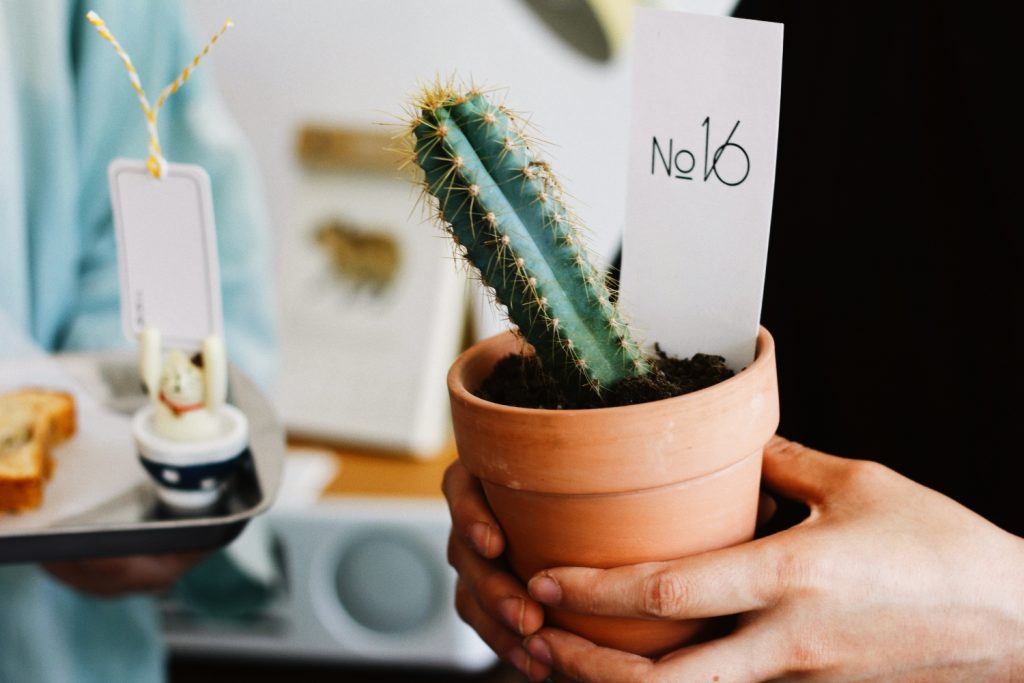
The solution: Tamp around the plant and provide support
If your newly transplanted/repotted cactus feels loose in its new home, you’ll need to add some soil and tamp around it gently to secure it.
Be sure to wear gloves and long sleeves during this process, and avoid touching the cacti’s spines.
Use your hands or a small wooden tamp to gently tap around the base of the plant. This helps eliminate air pockets and settle the soil.
You don’t want to compact the soil too much, as this will prevent air and water from reaching the plant’s roots. However, some compaction is necessary to secure the cactus and keep it upright.
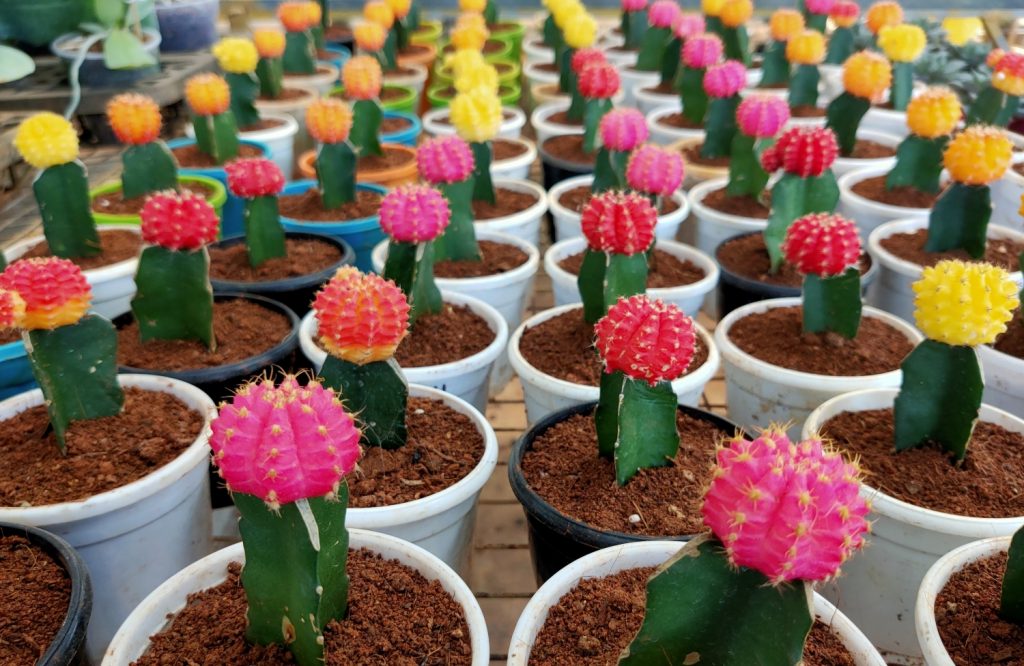
The problem: The plant has become top-heavy
Some cacti, like prickly pear and bunny ears, produce pads, which are modified stems. And these stems erupt from other stems as the plant grows.
But, over time, the plant may produce too many stems on one side, and not enough on the other, causing the cactus to lean.
Additionally, linear cactus varieties, like the Peruvian apple cactus, produce large flower heads near the top of the plant. If the flower buds become concentrated to one side, it may cause the plant to tip slightly.
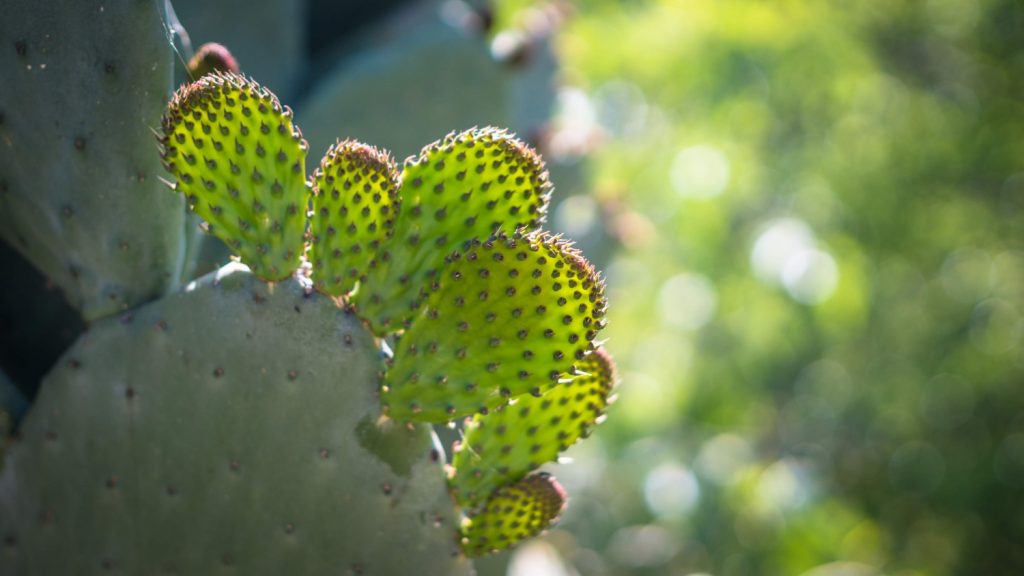
The solution: Prune the cactus and provide support
If your cactus has become top-heavy, then it’s time to give it a trim.
Prune your cactus in spring or summer. Use shears to make clean cuts just above the leaf nodes or joints.
Remove dead, misshapen branches and trim excess away to keep the plant symmetrical.
Again, be sure to wear gloves and long sleeves when pruning your cactus, and avoid touching the spines.
Once your cacti’s shape has been improved, use stakes and string to help support it as it realigns itself.
The problem: Insufficient sunlight
Cactus plants love the sunlight. They need at least 6 hours of sunlight every day, especially when planted in cooler climates.
If your cactus isn’t getting enough sunlight, it may “move towards the light”.
Your cactus could be falling over in an attempt to reach a light source. Take note of how much light your catus gets throughout the day, and if the plant could be trying to reach it.
Low light conditions mean your cactus can’t produce enough food for itself. And that lack of energy results in poor root formation and, consequently, leaning.
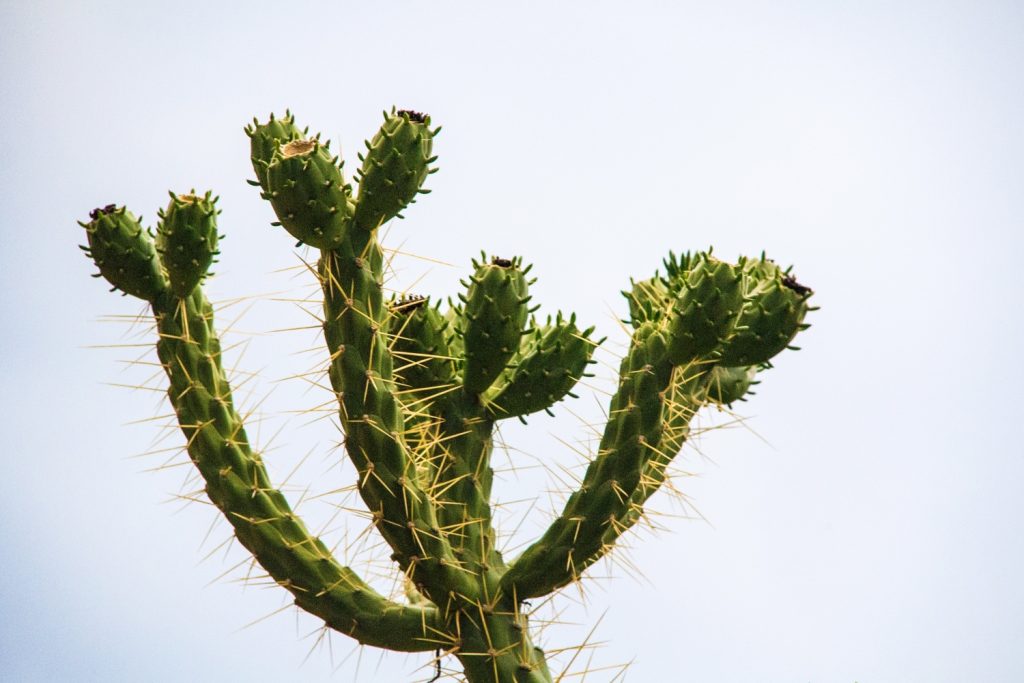
The solution: Move the cactus out of the shade
If your cactus is straining to reach the sunshine, give it a hand.
Move potted cacti to a warmer, sunnier location. If your cactus is growing indoors, then keep the plant in the brightest room possible. This will help it meet all of its energy needs.
If your cactus is growing outside, you’ll need to transplant it to a sunnier location.
It’s worth noting that if you’re growing cacti in an especially hot climate, the plants may perform better if they’re planted in a location where they can receive some dappled afternoon shade. This allows the plants to cool down and retain moisture.
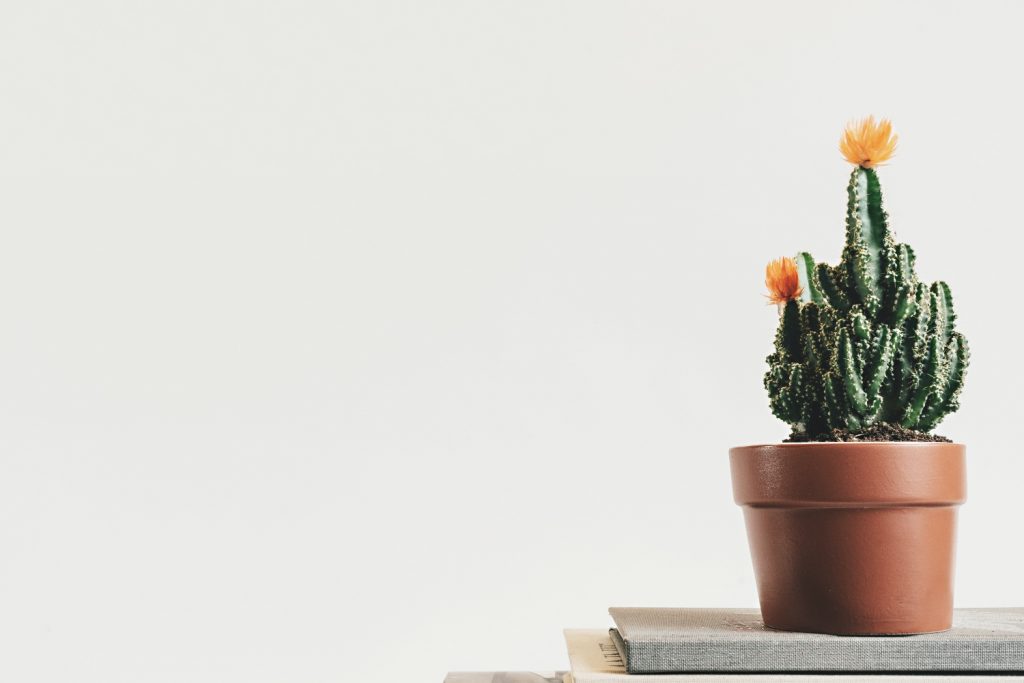
The problem: Frost damage
Cacti don’t like the cold weather. And if you leave your cactus out during a hard frost, the plant will suffer.
Cacti may lean after being exposed to freezing temperatures. The leaves may turn yellow or white, and they may go from smooth to wrinkled.
In the hours following a freeze, your cactus may also start to lean and have a wilted appearance.
The solution: Protect the cactus from cold weather
Always bring potted cacti in during the winter to protect them from cold weather.
As for outdoor cacti, cover the plants with packing blankets and/or tarps to protect them from freezing temperatures.
Plants that are leaning as a result of cold temperatures may require additional support until they recover. Use stakes and string to help the cacti regain their “footing”.
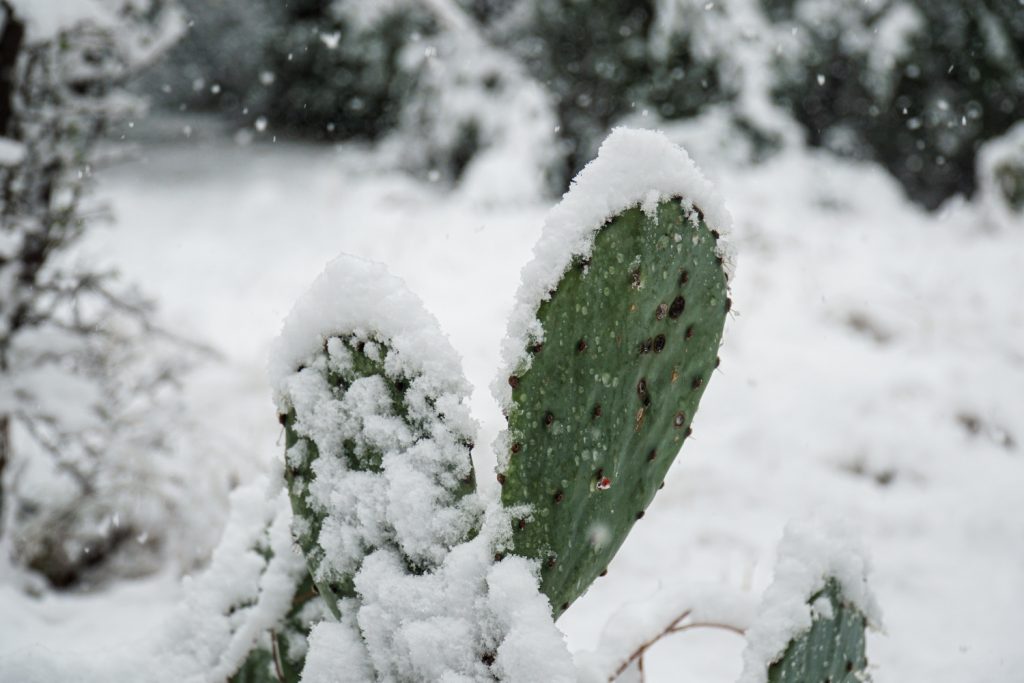
Tips for keeping cactus plants upright
Growing your cactus in sufficient sunlight and in well-draining soil keeps the roots in tip-top shape so they can help anchor the plant.
Be sure to grow your cacti in a heavy pot. Terra cotta and ceramic pots counterbalance the weight of the cactus as it grows, so it will be less likely to fall over.
Overall, keeping your cactus upright is a matter of caring for all of its needs, and addressing issues like insect infestations early. With consistent care, you can prevent your cactus from falling over so it can grow healthily.
